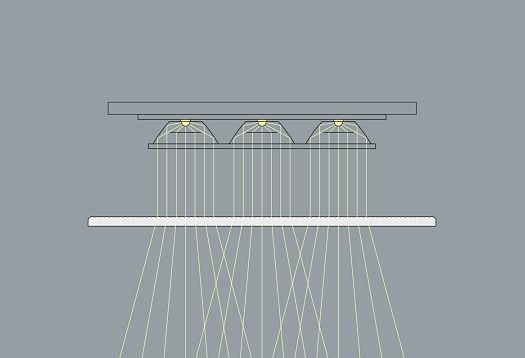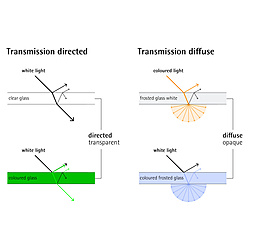
Projection is the transfer of an image by means of an optic onto a surface. In architectural lighting, the light from a point light source, usually an LED, is directed via lenses onto the target surface. The light is scattered or focused, depending on the shape of the lens. High quality lens systems are precisely matched to the light source and thus able to direct the light with precision onto the target surface. The result is effective photometric systems that achieve high illuminance (lx) with low connected load (W).










